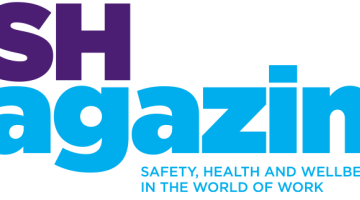Substance use and work
With the legalization of recreational cannabis in Canada, questions have been raised about patterns of cannabis use at work, the use of cannabis to treat work-related injuries, and the implications of such uses for work productivity, workplace health and safety and work disability management. IWH research examines these questions, as well as questions about the use and effectiveness of narcotics or opioids to treat pain, including pain associated with work injuries, and patterns of opioid-related harms among workers.
Featured

Research Highlights
Severe pain, not pressure to return to work or lack of accommodation offer, linked to opioid use post-injury
An IWH study found that among a group of injured workers in Ontario, those who experienced severe pain were more likely to use opioids than those who had no or only mild pain.
Published: February 12, 2025

Issue Briefing
Cannabis use by workers before and after legalization in Canada
Since 2018, when non-medical use of cannabis was legalized in Canada, a pair of Institute for Work & Health (IWH) studies was conducted to explore the implications of this change for workplaces. This briefing sums up their findings.
Published: December 5, 2024

IWH in the media
Labours lost: How opioid deaths are hollowing out the construction industry
For families, the tragedy of opioids is beyond measure. For Canada, the cost is tens of billions in lost productivity, reports Jason Kirby. The article also cites IWH's Dr. Nancy Carnide, who co-led research examining 13,700 opioid poisonings among 1.7 million people in Ontario who received workers compensation for injuries between 2006 and 2020.
Published: The Globe and Mail, November 2025

IWH in the media
A matter of substance in OSH
Whether it’s cocaine, opioids, prescription medications or performance-enhancing substances, drug use among workers is a challenge for workplaces globally. An article by Katie Smith explores the impact of drugs on workers and workplaces globally, and what the implications are for OSH practitioners. It includes findings from a joint project by the Institute for Work & Health and the Occupational Cancer Research Centre, which indicate that injured workers had higher rates of opioid-related harm compared with individuals of working age in the general population.
Published: IOSH Magazine, September 2025

IWH in the media
Study: Pain levels drive workers’ opioid use after injuries
Severe pain is the main factor associated with opioid use after a work-related injury, regardless of the employee’s return-to-work timeline, a recent study out of Canada suggests. Findings show that 35.6 per cent of the workers used opioids more than once in the past year. However, those who experienced severe post-injury pain were nearly three times more likely to use opioids than the participants who had mild or zero pain.
Published: Safety+Health, March 2025

Research Highlights
Severe pain, not pressure to return to work or lack of accommodation offer, linked to opioid use post-injury
An IWH study found that among a group of injured workers in Ontario, those who experienced severe pain were more likely to use opioids than those who had no or only mild pain—regardless of whether they felt they had to return to work too soon, or were offered work accommodations.
Published: February 2025

IWH in the media
Injured workers have higher rates of opioid poisonings than the general population.
People who have previously experienced a work-related injury are more likely to experience opioid poisonings and other opioid-related harms than the general population. That’s according to research conducted by the Institute for Work & Health (IWH) and the Occupational Cancer Research Centre (OCRC), using data from 1.7 million Ontario workers who had an accepted lost-time workers’ compensation claim between 1983 and 2019.
Published: Rehab & Community Care Medicine , February 2025
Journal article
Journal article
Opioid use among injured workers: pain and the return-to-work experience
Published: Occupational and Environmental Medicine, February 2025
Journal article
Journal article
Employment quality and suicide, drug poisoning, and alcohol-attributable mortality
Published: American Journal of Epidemiology, February 2025

IWH in the media
Analysis: Employees no more likely to consume cannabis during work hours following legalization
Marijuana legalization is not associated with an uptick in the percentage of employees consuming cannabis either during or prior to work, according to data provided in a briefing paper by the non-profit research organization Institute for Work & Health.
Published: NORML, January 2025

Issue Briefing
Cannabis use by workers before and after legalization in Canada
On October 17, 2018, the non-medical use of cannabis was legalized in Canada. To examine the implications of this change for workplaces, the Institute for Work & Health (IWH) embarked on two research projects. The studies explored changes in cannabis consumption habits among workers; changes in their perceptions about such consumption; associations between cannabis consumption and occupational injury risks; as well as the use of cannabis to treat symptoms in the aftermath of a work-related injury/illness. This Issue Briefing provides an overview of findings from these two studies and the potential implications of this research for employers and policy-makers.
Published: December 2024

IWH in the media
Study links work injuries to increased opioid harms
A new study has found that workers who suffered from job-related injuries are more likely to experience opioid-related poisonings and other harms than the general population. The research, conducted by the Institute for Work & Health (IWH) and the Occupational Cancer Research Centre (OCRC), analyzed data from 1.7 million Ontario workers who filed lost-time compensation claims between 1983 and 2019, Jonalyn Cueto reports.
Published: Human Resources Director Canada, October 2024